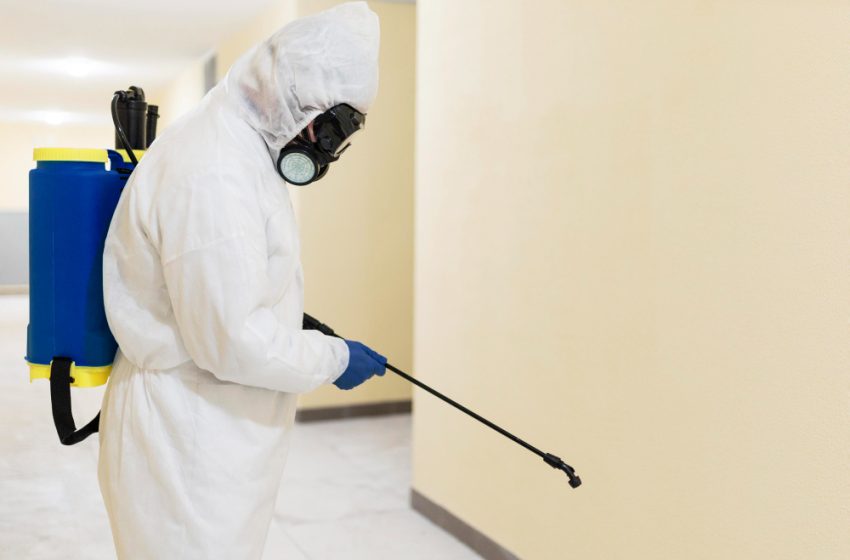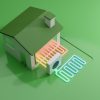Termites: The Silent Home Destroyers—How to Identify and Prevent an Infestation

Termites are often called “silent home destroyers” for good reason—they can cause significant damage to your home without you even noticing until it’s too late. These tiny insects work invisibly, chewing through wood, drywall, and other materials, weakening the structure of your home. As one of the most destructive pests, termite infestations are a serious concern for homeowners. The good news is that by learning how to identify and prevent termite activity, you can protect your home from extensive damage.
What Are Termites and Why Are They Dangerous?
Termites are social insects that thrive in colonies and feed primarily on wood, which is a crucial component of your home’s structure. They are classified into different species, with subterranean termites being the most common and destructive in the U.S. These termites live underground and build tunnels to reach their food source, while drywood termites live inside the wood they consume.
The danger posed by termites is often underestimated because their damage can go unnoticed until it has become extensive. Their ability to destroy wood from the inside out makes them difficult to detect, and by the time you see visible damage, it may already be too late to prevent costly repairs.
Signs of a Termite Infestation
Recognizing the early signs of a termite infestation is crucial to minimizing damage. Here are some common indicators that you may have termites in or around your home:
1. Mud Tubes on Walls or Foundation
Termites build mud tubes to travel from their colonies to their food source. These tubes, which are about the width of a pencil, are typically found along the foundation, exterior walls, and in basements or crawl spaces. They are made from a combination of soil, wood, and termite saliva, and they help termites maintain moisture as they travel.
2. Hollow-Sounding Wood
If you tap on wooden beams, flooring, or furniture and hear a hollow sound, it could be a sign that termites have eaten away the interior wood, leaving only a thin exterior layer. This damage can compromise the structural integrity of the wood.
3. Swarmers or Winged Termites
Termite swarming is often mistaken for an ant infestation. Swarmers are reproductive termites with wings, and they emerge from colonies during specific seasons to find new places to start a colony. If you notice wings near windowsills, light fixtures, or other bright areas, you may have an active termite colony nearby.
4. Visible Frass (Termite Droppings)
Frass looks like small, hard pellets of wood dust or sawdust and can often be found around infested furniture, beams, or walls. Frass is the waste produced by drywood termites as they feed on wood. If you notice small piles of frass near wooden structures, it’s a sign that termites are present.
5. Peeling or Bubbling Paint
Paint that is bubbling or peeling may indicate moisture problems, but it could also be caused by termites. As termites burrow through wood, they often create small pockets of moisture, which can cause the paint on the surface to peel.
6. Tight-Fitting Doors or Windows
Termite damage can cause wood to warp or shift, making it difficult to open or close doors and windows properly. If you notice that your doors or windows suddenly stick or seem out of alignment, it may be due to termite activity inside the wood.
How to Prevent Termite Infestation
While you may not be able to eliminate the risk entirely, there are several effective steps you can take to reduce the likelihood of a termite infestation in your home:
1. Eliminate Moisture Sources
Termites are attracted to moisture, so reducing excess moisture around your home is key to preventing an infestation. Fix any leaky pipes, faucets, or roof areas to prevent water from accumulating. Ensure that your gutters are clean and that downspouts direct water away from your foundation. In addition, ensure that your lawn is graded properly so water doesn’t pool near your foundation.
2. Seal Cracks and Gaps
Termites can enter your home through the smallest of cracks or gaps. Seal any openings around your home’s foundation, windows, doors, and even utility pipes. Pay special attention to cracks in the foundation and gaps around pipes and vents.
3. Use Termite-Resistant Building Materials
If you’re building a new home or renovating, use termite-resistant materials like pressure-treated wood or steel for framing, decking, and other wooden structures. This can make it harder for termites to find a food source and enter your home.
4. Remove Wood and Debris from Around Your Home
Termites feed on wood and organic material, so keep firewood, wooden mulch, and tree stumps away from your home. Store firewood at least 20 feet from your home and elevate it off the ground to prevent it from attracting termites.
5. Install a Termite Barrier
There are chemical treatments available that can be applied around the foundation of your home to create a barrier that repels or kills termites. This barrier, often referred to as a “termite shield,” can be effective for several years. If you’re in an area with a high termite risk, this can be an added level of protection.
6. Routine Inspections by a Professional
A termite inspection by a licensed pest control expert is one of the most effective ways to detect and prevent an infestation. Regular inspections, at least once a year, will help catch any potential termite activity early, before significant damage occurs.
When to Call a Professional
While DIY measures can help reduce the risk of termites, the best way to protect your home is to have it regularly inspected by a professional pest control expert. If you suspect a termite infestation, it’s crucial to call a licensed termite control specialist. They can conduct a thorough inspection, identify the type of termites, assess the extent of the infestation, and recommend an effective treatment plan.
Treatment options can include liquid termiticides, bait systems, and fumigation, depending on the severity of the infestation. A professional can also offer ongoing monitoring and preventative services to ensure that termites don’t return.
Final Thoughts
Termites may be small, but the damage they can cause to your home is anything but insignificant. Recognizing the signs of an infestation early, taking preventative measures, and scheduling regular inspections can help protect your property from these silent destroyers. By being proactive and seeking professional help when needed, you can safeguard your home from the costly damage termites can cause.

